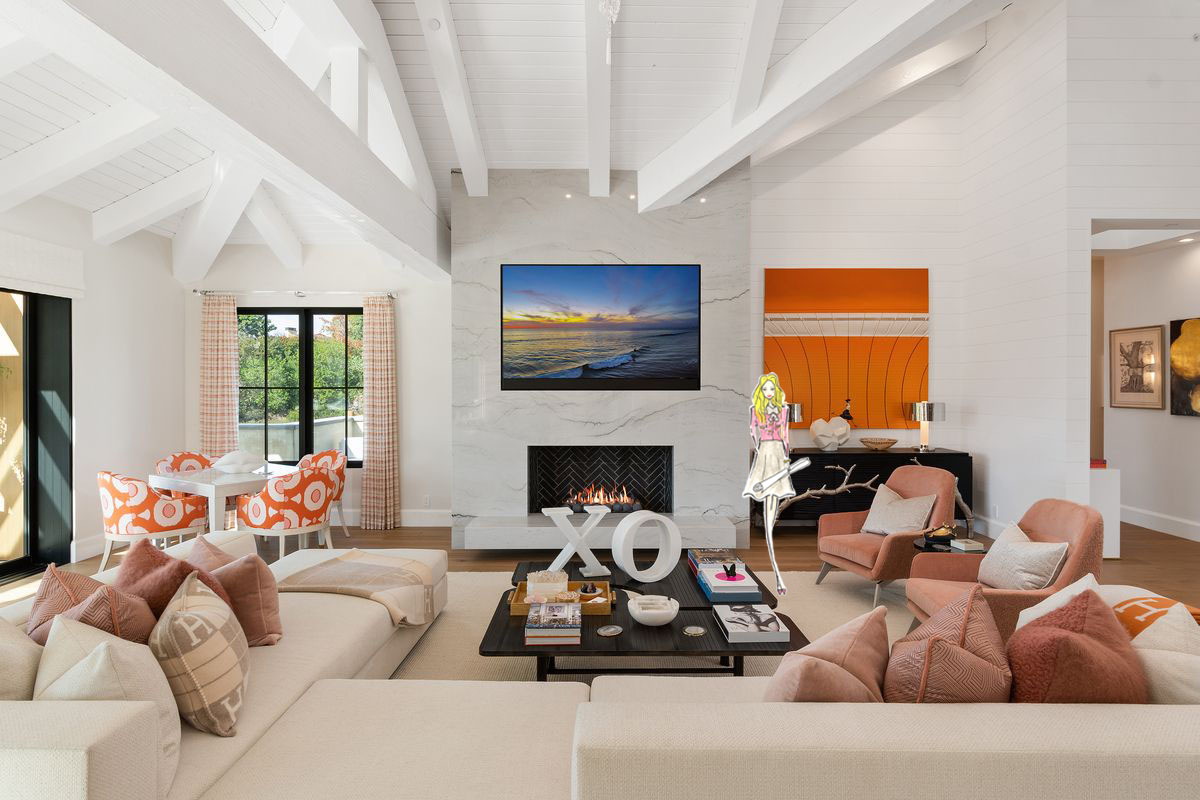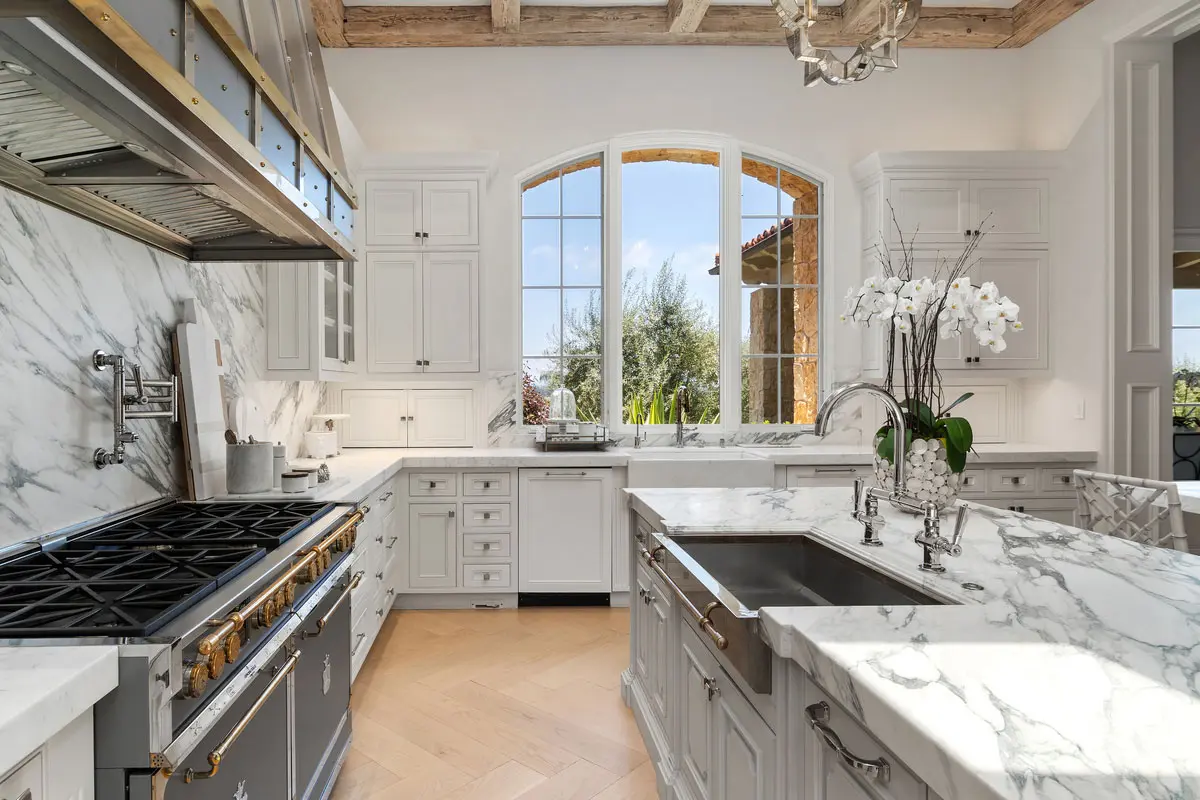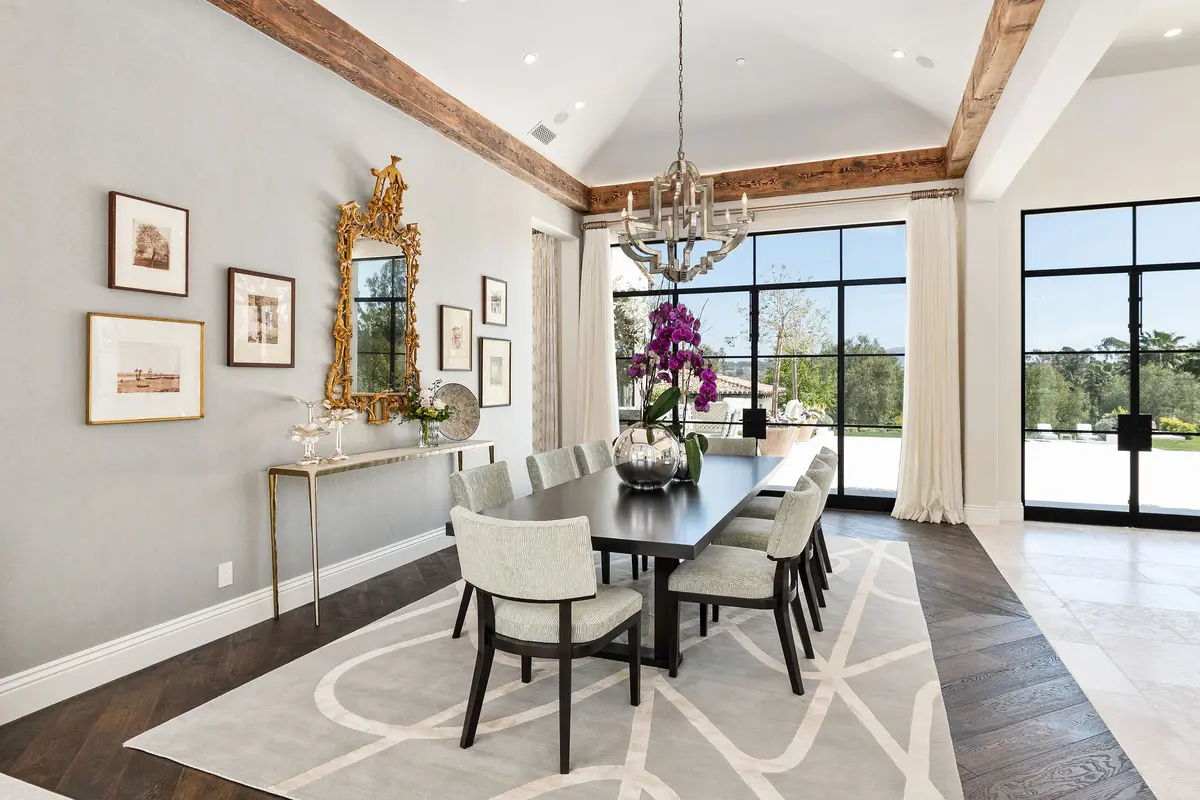The way we live and interact with our homes is evolving. Today, homeowners increasingly crave a harmonious connection between their indoor and outdoor spaces. The traditional distinctions between indoor and outdoor living are becoming blurred as we look for ways to create more cohesive, functional, and aesthetic spaces.
Merging the interior with the exterior can have many benefits, from maximizing natural light to encouraging fresh air circulation and increasing usable living areas. Whether you have a spacious patio or a small balcony, crafting a seamless transition between the indoor living areas and outdoor patios, gardens, or terraces is possible with a few strategic design choices.
Creating that transition requires the thoughtful integration of large windows, glass doors, consistent flooring, and a cohesive color scheme. The good news is that these simple design adjustments can enhance your home’s visual flow, encourage a more open feeling, and provide a deeper connection with nature.
This guide explores the key elements you can implement in your home to effectively blur the boundaries between the inside and outside, bringing both spaces together in a stylish and functional way.
The Basics of Indoor-Outdoor Flow
Indoor-outdoor flow is the process of designing a smooth transition between the two spaces, eliminating visible barriers, and allowing each space to feel part of the whole. A seamless indoor-outdoor design creates a continuous, open feel that connects both areas, making your home feel more expansive and cohesive. The result is a fluid connection that encourages natural movement between the two.
To achieve an effective indoor-outdoor flow, key elements like large windows, glass doors, and consistent flooring are essential. These components help eliminate the usual barriers (like walls and doors) that can separate the interior from the exterior. But it’s not just about removing obstacles; it’s about enhancing the spaces to create an inviting, cohesive atmosphere that maximizes both light and space.
The beauty of indoor-outdoor living lies in the sense of connection it fosters between the inside and outside environments. Thoughtful design can extend living spaces, create zones for relaxation, and allow for easy interaction with nature while still maintaining privacy and comfort.
Why Is This Trend So Popular?
The desire to create a seamless indoor-outdoor flow is growing, particularly as people become more attuned to the benefits of living close to nature. The trend is closely linked to the growing popularity of sustainable design, energy efficiency, and biophilic design principles—a philosophy that emphasizes the connection between humans and nature.
Here’s why this approach is so appealing:
- Maximizing space: Connecting indoor and outdoor spaces expands the usable area of your home, giving the illusion of more room without increasing the square footage.
- Improved light and air flow: Natural light and ventilation can move freely through a space, making the interior feel brighter, fresher, and more inviting.
- Encouraging outdoor living: This design encourages you to spend more time outdoors, making the most of your garden, patio, or balcony.
- Energy efficiency: By allowing natural light to penetrate deeper into the space, you can reduce the reliance on artificial lighting during the day. Additionally, effective cross-ventilation can help cool the home naturally, reducing energy costs.
As homeowners seek better ways to maximize their living environments and connect with nature, these design elements have become more sought-after, offering both practical benefits and aesthetic appeal.
Key Elements for Creating Indoor-Outdoor Flow
Now, let’s delve deeper into the key elements you can integrate into your design to boost indoor-outdoor flow. Each of these elements will help foster a smooth transition, creating a unified experience between your interior and exterior spaces.
1. Large Windows and Glass Doors
One of the most impactful ways to improve indoor-outdoor flow is by incorporating large windows and glass doors. These architectural features are essential in creating a sense of openness between the interior and exterior, allowing for uninterrupted views of your outdoor spaces.
- Sliding glass doors: Sliding doors offer a convenient, space-saving solution for merging the indoor and outdoor spaces. These doors can open wide to connect living spaces directly to the patio or garden, creating a seamless boundary. Bi-fold and multi-slide doors are great options as they can open up the space entirely, removing the barrier between the indoors and outdoors.
- Floor-to-ceiling windows: Large windows not only let in more natural light but also provide unobstructed views of the outdoors. These windows help visually connect the two spaces, enhancing the feeling of openness and encouraging interaction with nature. Casement or awning windows can be used for more flexibility, allowing you to open them wide for increased ventilation.
- French doors: A timeless choice, French doors are often used to create an elegant transition between indoor and outdoor areas. These doors offer a wide opening and can be designed with beautiful framing to match the aesthetic of your home. They are perfect for dining rooms, living areas, or even a cozy reading nook that extends to the outside.
2. Consistent Flooring Throughout
One of the most effective ways to create visual continuity between the indoor and outdoor spaces is to use consistent flooring materials. By choosing materials that work well both inside and outside, you can achieve a cohesive look that ties everything together seamlessly.
- Wood: Hardwood floors or engineered wood can work indoors and outdoors, bringing warmth and texture to both spaces. Whether it’s the warm tones of oak or the sleek finish of walnut, wood floors make an elegant transition between rooms and create a sense of natural harmony with your outdoor area.
- Stone: Materials like travertine, slate, or granite are perfect for both interior and exterior spaces. They add durability and natural beauty, and their timeless appeal allows for consistent design across different areas of the home.
- Concrete: For a more industrial or modern look, polished concrete is a popular option for both indoor and outdoor spaces. It provides a sleek, minimalist feel and is extremely versatile. Concrete can also be stained or painted to match your overall aesthetic, offering a seamless transition that’s durable and low-maintenance.
Using the same flooring material indoors and outdoors visually blends the two spaces together, ensuring that the design feels unified and flowing. You can also opt for flooring with the same color tones, whether using light neutrals, earthy tones, or grays, to create a smooth connection between the spaces.
3. Cohesive Color Scheme
Along with flooring, a cohesive color scheme is essential in creating a seamless transition. Colors that reflect the outdoor environment or carry the same tones indoors can create a sense of flow and unity.
- Neutral palettes: Opt for neutral shades like soft whites, grays, taupes, and beiges for a unified look. These colors can be carried throughout the home and seamlessly extended to your outdoor furniture, flooring, and décor. Neutrals enhance the light and spaciousness of a room, while still providing a calm backdrop for bolder accents.
- Accent tones: Choose accent colors inspired by nature, like forest greens, sky blues, and sunset oranges. These colors can be incorporated into the walls, fabrics, cushions, and even outdoor furniture to create harmony between the interior and the outdoor environment.
A cohesive color scheme ties the spaces together, ensuring that the indoor and outdoor areas don’t feel disconnected. Soft gradients or layered tones can also be used to guide the eye and create a fluid visual transition.
4. Outdoor Furniture and Décor
Furniture is not just functional; it’s a key design element that contributes to the aesthetic flow between your indoor and outdoor spaces. The right outdoor furniture and accessories can help you maintain a cohesive look and feel in both areas.
- Matching styles: Ensure that your outdoor furniture complements your indoor pieces. If your interior style is modern and minimalist, choose sleek, metal-framed or contemporary outdoor seating. For a more rustic, bohemian vibe, use woven or weathered wood outdoor furniture that mirrors your interior aesthetic.
- Cushions, throws, and pillows: Use outdoor cushions and throws that match your indoor décor. This ensures that the spaces feel tied together and cozy, inviting people to spend time in both environments.
- Planters and greenery: Plants are a great way to bridge the gap between indoors and outdoors. Indoor planters that echo the style and size of your outdoor pots can create continuity. Consider a variety of indoor plants—like succulents or fiddle-leaf figs—that are low-maintenance but add life and color to your space.
5. Outdoor Lighting for Added Ambiance
Lighting can enhance the indoor-outdoor flow after dark. Just as indoor lighting is essential for creating ambiance inside, outdoor lighting is key to connecting the two environments. By choosing complementary light sources, you can create an atmosphere that flows naturally from the inside to the outside.
- Recessed lighting: Recessed lighting both indoors and outdoors helps to subtly illuminate areas without overpowering the space. It’s perfect for lighting up walkways, patios, or dining areas without breaking the flow.
- String lights and lanterns: Outdoor string lights can be draped across your patio or balcony to create a warm, inviting glow that seamlessly connects to your indoor lighting.
- Smart lighting systems: Implementing smart lighting that adjusts based on the time of day or the function of the space can be especially useful for homes with integrated indoor-outdoor designs. You can set lighting levels to match the natural light during the day and adjust to a cozy glow in the evening.
Conclusion: Achieving a Seamless Indoor-Outdoor Flow
The desire for a seamless indoor-outdoor flow is becoming a cornerstone of modern home design. Whether you’re incorporating large glass doors, cohesive flooring, or the right outdoor furniture, the goal is to create a space where the boundaries between indoor and outdoor living are blurred, yet functional. This flow extends your living space, increases natural light, and promotes better air circulation.
By embracing indoor-outdoor living, you are not just enhancing your home’s aesthetic appeal but also improving the quality of life. A space that merges the indoors with the outdoors feels larger, fresher, and more inviting. Whether you’re hosting guests or enjoying a quiet evening, the design choices you make will contribute to a versatile, comfortable, and elevated lifestyle.
At Kern & Co Designs, we specialize in helping homeowners create seamless transitions that blur the lines between the interior and the exterior. Whether you’re considering sliding glass doors, selecting indoor-outdoor furniture, or planning outdoor lighting, our team can guide you through the design process to achieve the perfect flow for your home.



